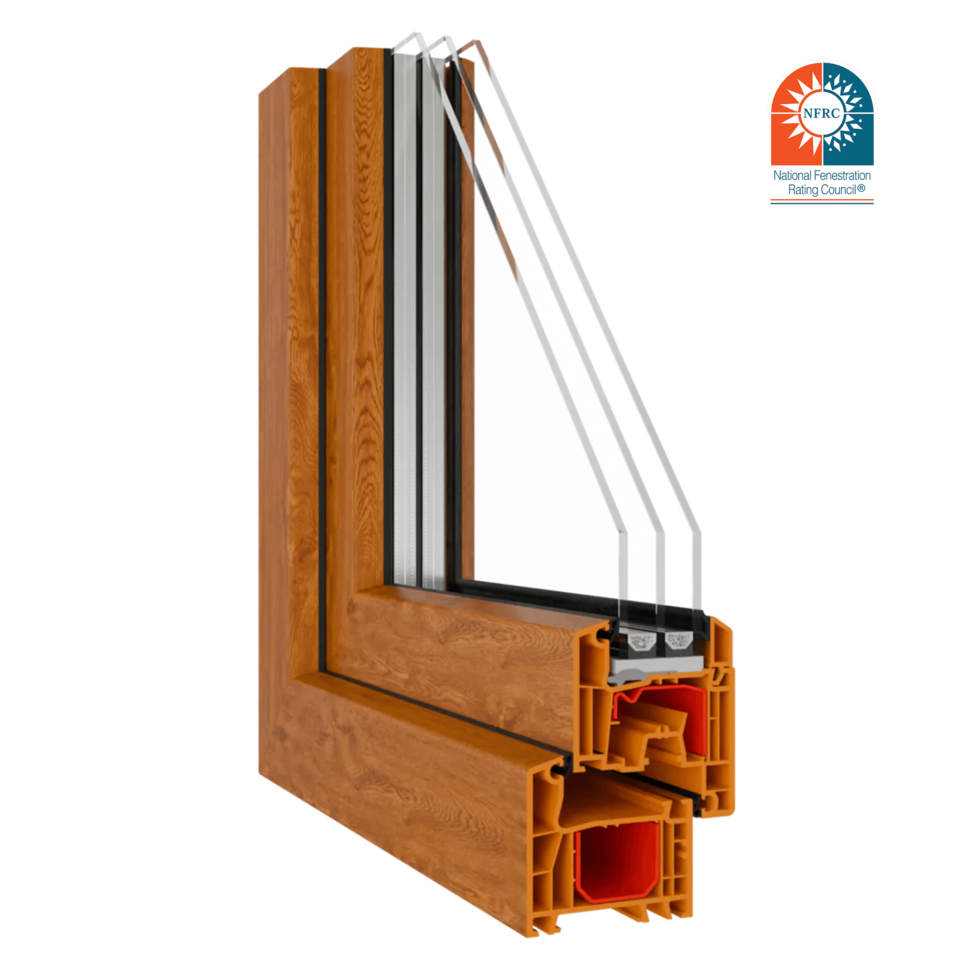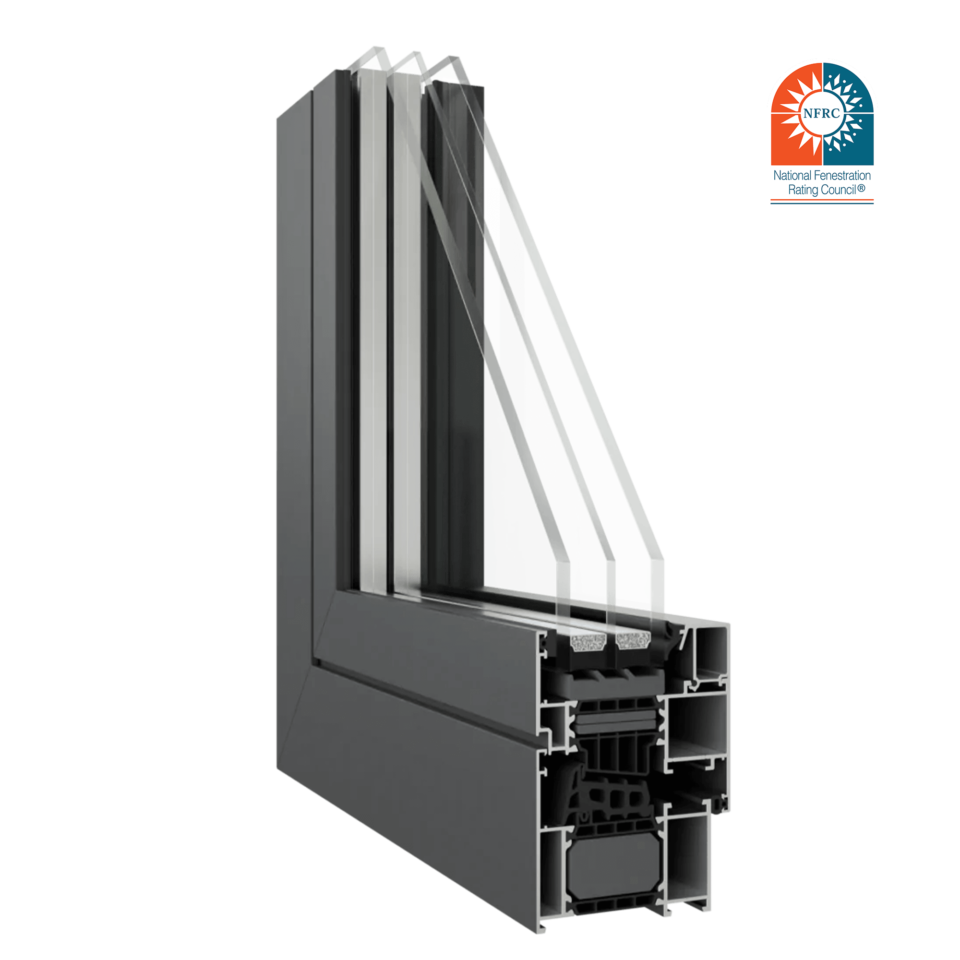Did you know that no one in Europe installs nailing flange windows? This is a method completely unknown to the average window installer in Germany or other parts of Europe. The installation there takes place without the use of nails!
Instead, the window frame is installed using anchors and dowels. Since windows in Europe are standardized for installation without a nailing fin, is there any point in importing European windows to the US?
I suspect that (since you’re here), you’ve thought about using European windows in your construction project. Perhaps you don’t have experience with them, but instead have a lot of questions, and your main dilemmas are about the lack of nailing flanges?
From this article, you will learn whether windows from Europe can have a nailing fin, and you will learn some surprising facts related to this topic. So let’s get to the details.
Do European windows have a nailing fin?
Most window manufacturers from Europe design solutions typically for the local installation method. This differs from American installation, therefore the design of European windows is different from American windows. In Europe, almost no one is familiar with windows with a nailing fin, while it is the most popular type of window in the US.
The good news is that there are European window systems that have a flange that allows for “American-style” installation. I’ll tell you about them later in the article.
What is a nailing fin and what is it used for?
It is a fin (another name: flange, nailing flange) used to nail the windows to the building. It looks like a thin, flat strip made of uPVC or aluminum that extends outward from the window frame. In American window installation, it is used to connect the window to the building’s window frame/window opening. It is also an American way of sealing to prevent water infiltration and air leakage.
How much do European nailing flange windows cost?
The final price of windows from Europe that have a nailing flange consists of 3 main factors:
- The price of the window itself
- The cost of attaching the flange
- The cost of import (borne by you or by a local distributor of European windows)
We have prepared below a comparison of several window systems with nailing fins. On the other hand, if you are interested in the topic of importing windows from Europe to the US and would like to learn more about how much it costs and what it looks like, take a look at Vindors B2B’s blog on the profitable import of European windows.
Price comparison of Aluplast Ideal 4000 with and without the nailing flange
For the additional nailing fin in the window and door system analyzed above, you pay about 4% more compared to the same system without the nailing fin. The reference window used for the price comparison is a tilt and turn window, white in color, with 2 panes, with dimensions of 4 ft 0.43 in x 4 ft 10.27 in.
The 4% surcharge for the nailing fin in a European window loses its meaning completely if you consider the price difference between American and European windows. Windows from Europe (German quality), depending on the type, can be cheaper than windows from the US by 40% on average, without losing quality.
How to install windows from Europe in the US?
We know from numerous conversations with our U.S. customers that some of them face the dilemma of how to install European windows the American way. Window installation in Europe is done differently than in the US. In Europe, no one uses a nailing fin, while in the US it is standard.
You want windows from Europe – but what next?
If your investor is interested in European windows, you can consider 2 types of windows: with or without nailing fin. You are not limited to just one type, but you must take into consideration that European profiles with nailing fins are much less common than those without.
However, we understand that you may not want to give up the traditional US way of installing windows. – Sometimes a company is so used to the American way of installation that it does not consider the European way, says Kamil Karpinski, Senior Business Consultant at Vindors B2B. This is confirmed by Business Team Leader at Vindors B2B, Wojciech Stach. – Most window installers in the US have dealt with the typical nailing fin window installation, Wojciech notes.
What if your installers are only used to American nailing flange windows?
Perhaps you have seen European windows at a friend’s house that were installed in a building without the special flange commonly used in the US. Would you like to try windows from Europe at your place, but can’t imagine installing windows without a fin, or are worried about whether your team can handle such a task?
Fortunately, this can be reconciled thanks to European profiles with nailing fins. They are designed by manufacturers specifically with the US market in mind. That’s why you won’t feel the difference in installation, and you’ll still get German quality.
Do these windows meet US requirements?
Our US customers often ask whether windows from Europe with a nailing fin are NFRC certified. This is a certification that determines, among other things, thermal performance parameters such as U-Factor. NFRC has, for example, the Aluplast Ideal 4000 window with a nailing fin. Take a look at Vindors B2B’s blog article on European and American window parameters if you would like to learn more about how to read the specifications of a given profile.
Overview of windows from Europe with a nailing fin
Windows with a nailing fin are almost unknown in Europe. Fortunately, among the European systems offering nailing fins, we can find several proposals. These include both vinyl and aluminum windows. Below you will find the most important information about European windows with a nailing fin – information given on the example of a 4 ft 0.43 in x 4 ft 10.27 in tilt and turn reference window.
Aluplast Ideal 4000
- material: uPVC
- fast production time
- U-Factor 0.23 Btu/h·ft2·F (Uw 1.3 W/m2·K)
- 2 panes
- reduced frame height (lets in more light)

Aluprof MB-79N
- material: aluminum
- bestseller among aluminum systems
- U-Factor 0.23 Btu/h·ft2·F (Uw 1.3 W/m2·K)
- max. glazing depth – 2.48 in
- 2 or 3 panes

Aluprof MB-86N
- material: aluminum
- dedicated to passive houses
- winner of the ranking of aluminum windows in the “quality” category
- U-Factor 0.15 Btu/h·ft2·F (Uw – from 0.84 W/m2·K)
- several thermal variants
- center seal

When considering the use of windows from Europe in your project, you don’t have to limit yourself to just one type of window or installation method. It is up to you to decide which one you consider suitable for your investor’s building.
If you think you can handle installing windows the European way, you then have a very wide choice of aluminum, vinyl, wood, or steel windows. For installation with a nailing fin, you can use a much smaller number of profiles, but they are still German quality systems that will help you increase the profitability of your business.